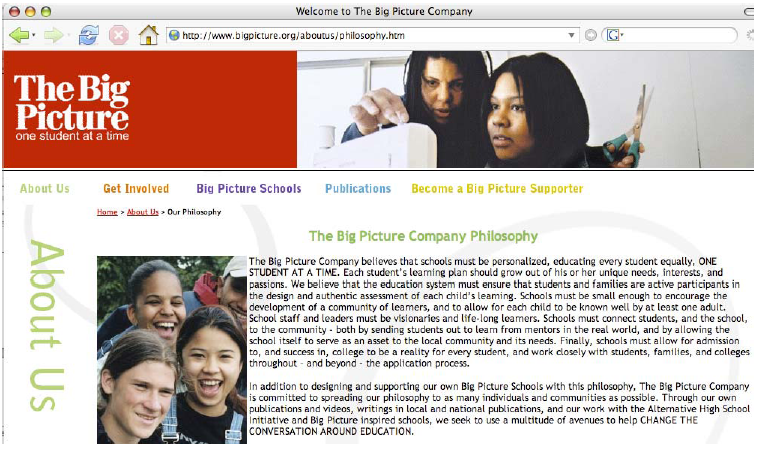The MET: No Classes, No Grades and 94% Graduation Rate
The Met School, in Providence, Rhode Island, in the United States, is a non-traditional school that has been so successful that it has become a model for opening many similar schools across the United States. Opened in 1996, the Met is a publicly funded career and vocational training high-school that is dedicated to educating ‘one student at a time’. Its students are predominately Hispanic, Black and inner-urban. There are no classes as such, rather each student has a negotiated Learning Plan, based on their interests and passions. The Met is premised on the idea that small schools are better and that students engage more if school isn’t confined to the classroom. A typical Met student spends a lot of time apparently ‘out’ of school—two days a week with mentors in the community who relate their passions to the real world. The student might work at a hospital, a bakery, or an architectural firm, for example. The radical approach of the Met also applies to the physical structure of the school. The idea has since spread and more schools have been established which apply the same principles, under the umbrella of the not-for-profit Big Picture Company. The MET is a glimpse of what schools of the future might be like.

The Big Picture Company believes that schools must be personalized, educating every student equally, ONE STUDENT AT A TIME. Each student’s learning plan should grow out of his or her unique needs, interests, and passions. We believe that the education system must ensure that students and families are active participants in the design and authentic assessment of each child’s learning. Schools must be small enough to encourage the development of a community of learners, and to allow for each child to be known well by at least one adult. School staff and leaders must be visionaries and life-long learners. Schools must connect students, and the school, to the community—both by sending students out to learn from mentors in the real world, and by allowing the school itself to serve as an asset to the local community and its needs. Finally, schools must allow for admission to, and success in, college to be a reality for every student, and work closely with students, families, and colleges throughout—and beyond—the application process.
In addition to designing and supporting our own Big Picture Schools with this philosophy, The Big Picture Company is committed to spreading our philosophy to as many individuals and communities as possible … Big Picture Schools hold very high standards for students. We have designed our educational program from the end-goal backwards—meaning, we have a clear vision of our graduates’ skills, knowledge and personal qualities that will help lead them to success and fulfilment. However, we also know that to truly educate one student at a time, our goals for their learning must be flexible enough to accommodate the diversity of student needs and personal aspirations. Our assessment system then is based around two sets of goals, five school-wide Learning Goals, and each student’s own personal goals. Woven throughout all of the goals is our commitment that learning be real and meaningful, and that each student should become a life-long learner … [H]igh school graduates must know how to reason, problem-solve and be cooperative members of the community. At Big Picture Schools, there is no canon of information that all students must know. In a world where information doubles every few years, we believe that the most important thing a student needs to know is how to learn.
Big Picture School advisors look at the big picture of each student’s learning and challenge the student to do academically rigorous project work that incorporates the Learning Goals and is focused around his or her personal interests and passions. Older students assist younger students in understanding and addressing the Learning Goals and are valued as role models of self-directed learning and goal achievement. Most importantly, Learning Through Internship projects provide students with the opportunity to address the Learning Goals in the real world.
